Having made a black and white photogravure print of my cml cells, Justin Sanders asked if I had considered a colour version? Furthermore he suggested a print technique that would preserve the black ink while giving an overall colour coverage: ‘Viscosity’ printing . Pink might work.
Prep is paramount to success. The selected hahnemuhle paper has to be soaked for a good 20minutes to saturate it with water to receive the inks. The pink ink has to be mixed with oil to a ‘honey’ consistency, rolled out evenly on a glass bed to ensure the ink is correspondingly evenly spread on the roller before it is rolled over the black inked plate, and placed in the press. The roller might only deposit the pink ink on the high areas of the plate, not the troughs where the black ink has been held.
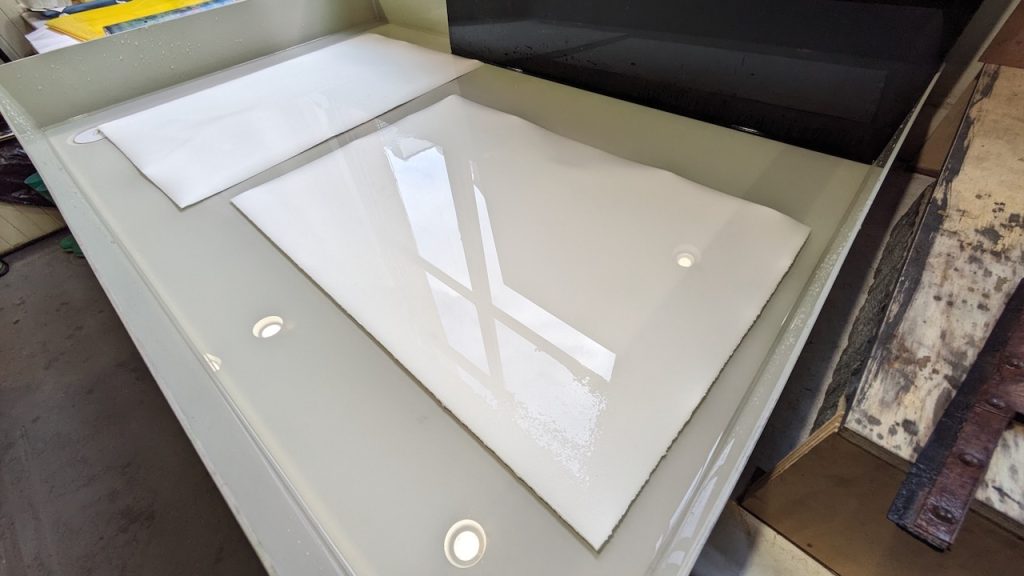
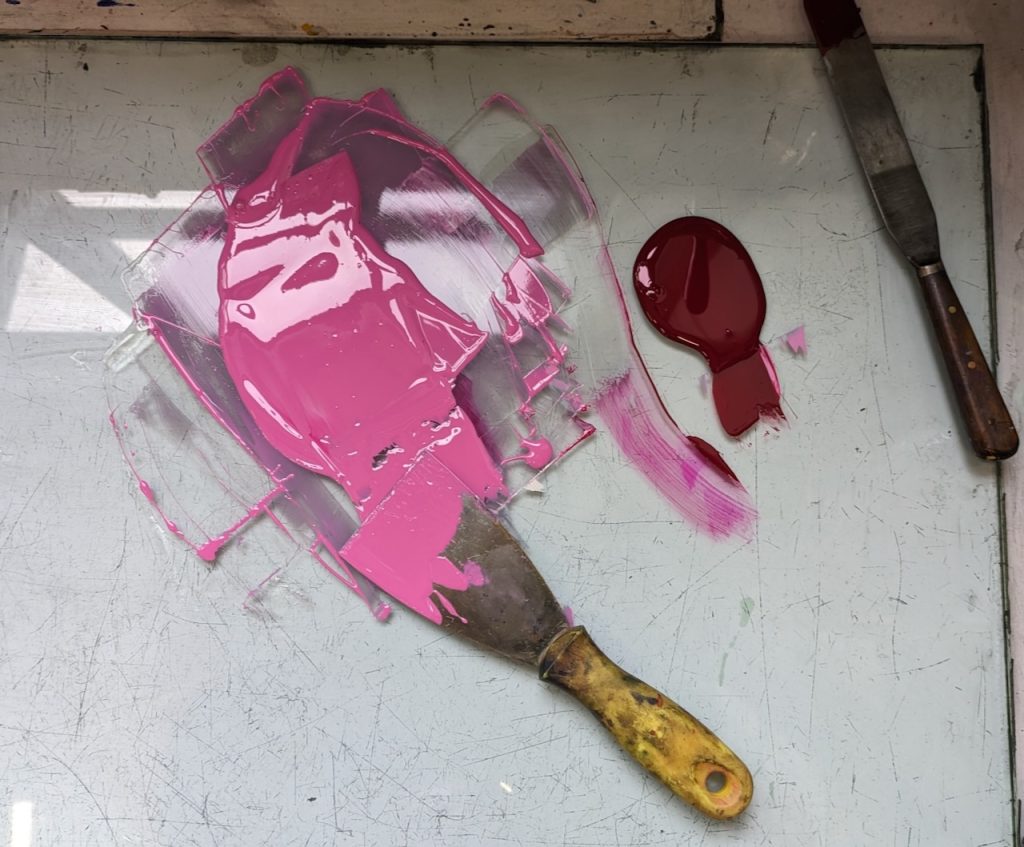
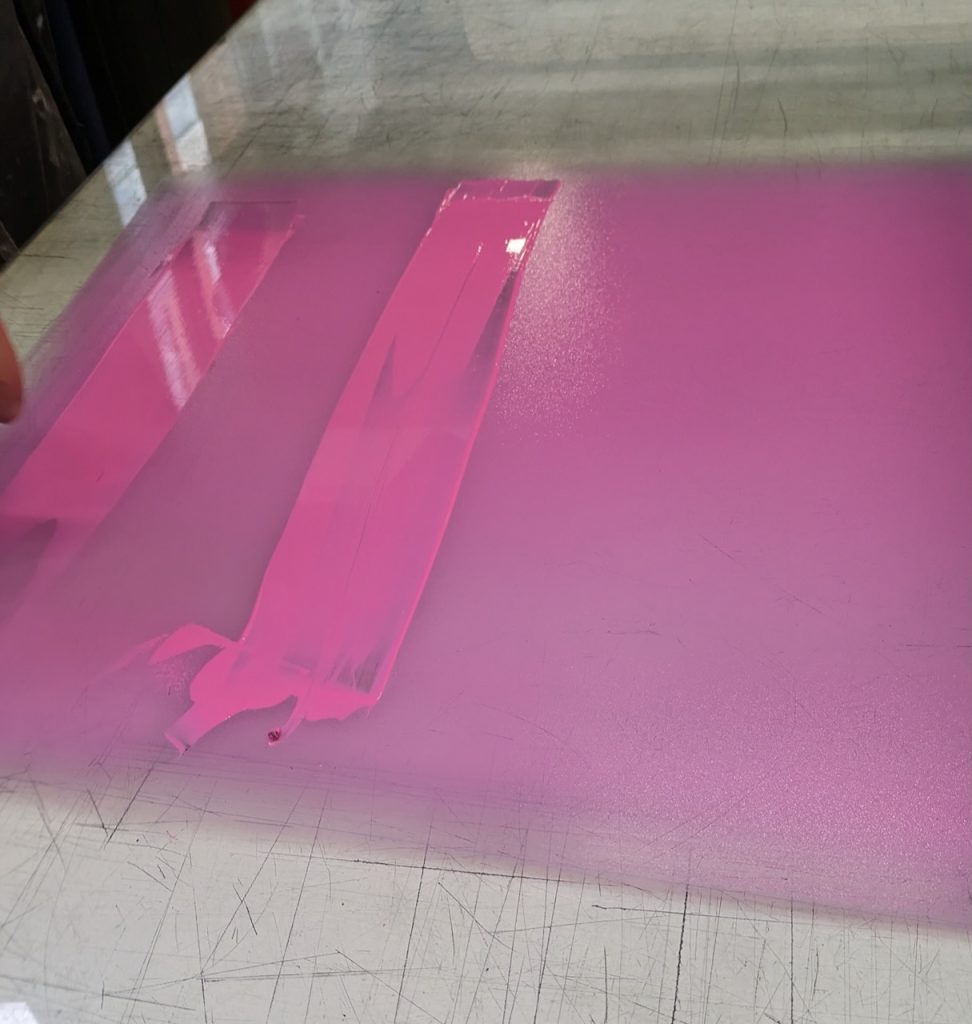
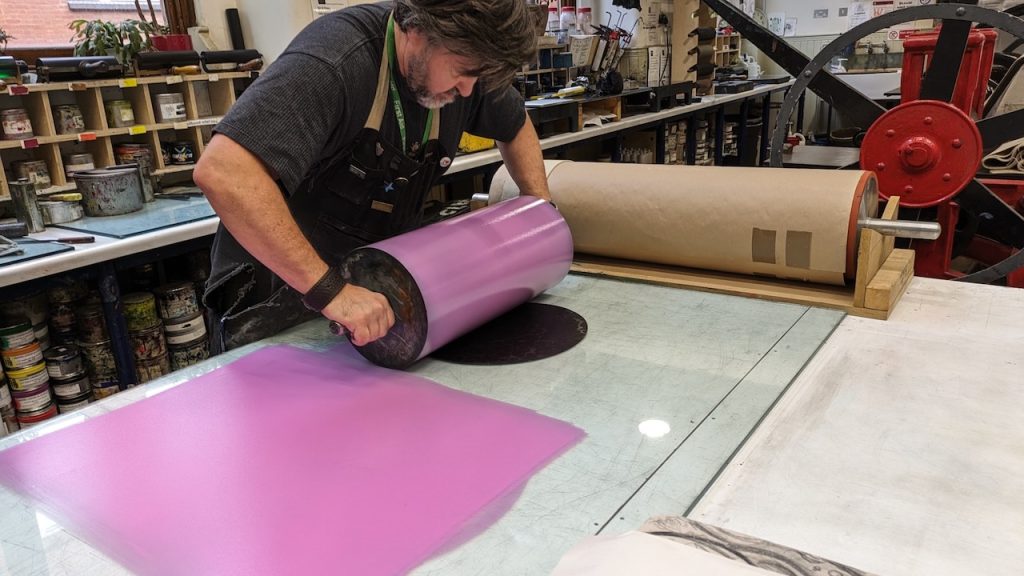
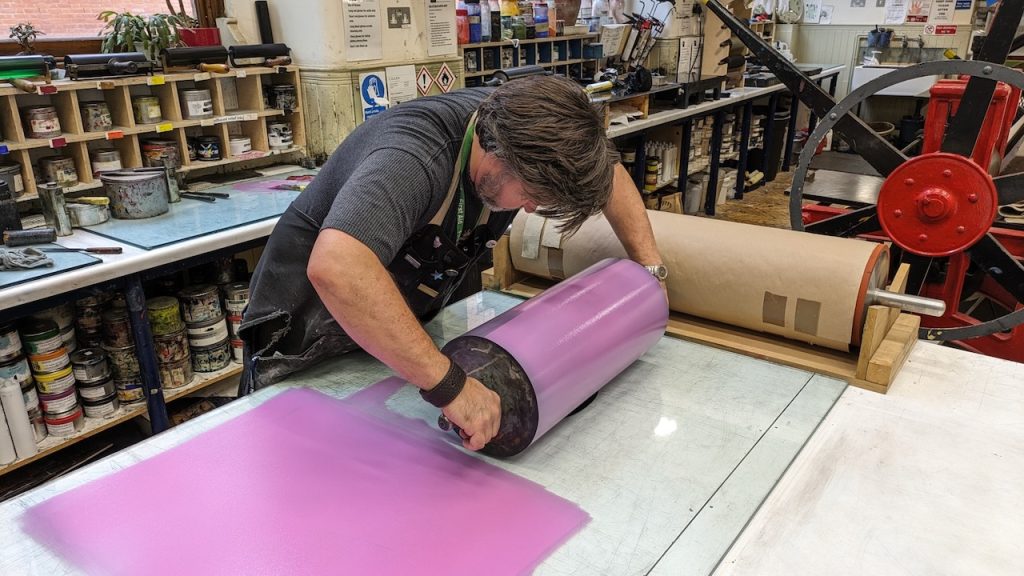
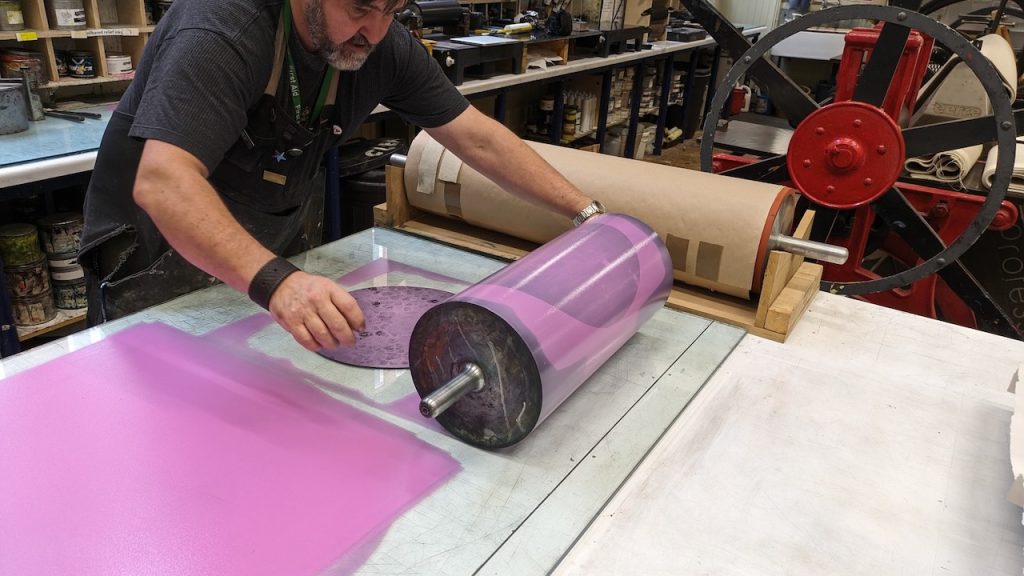
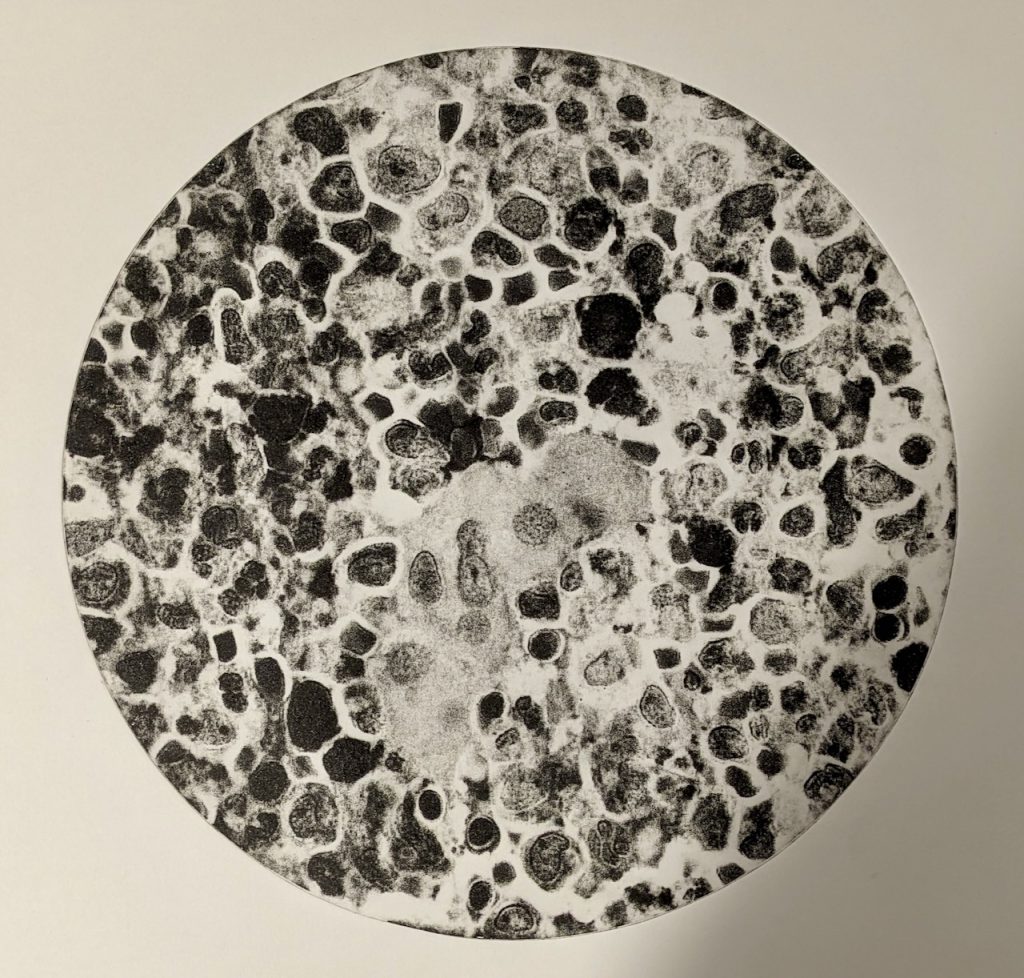
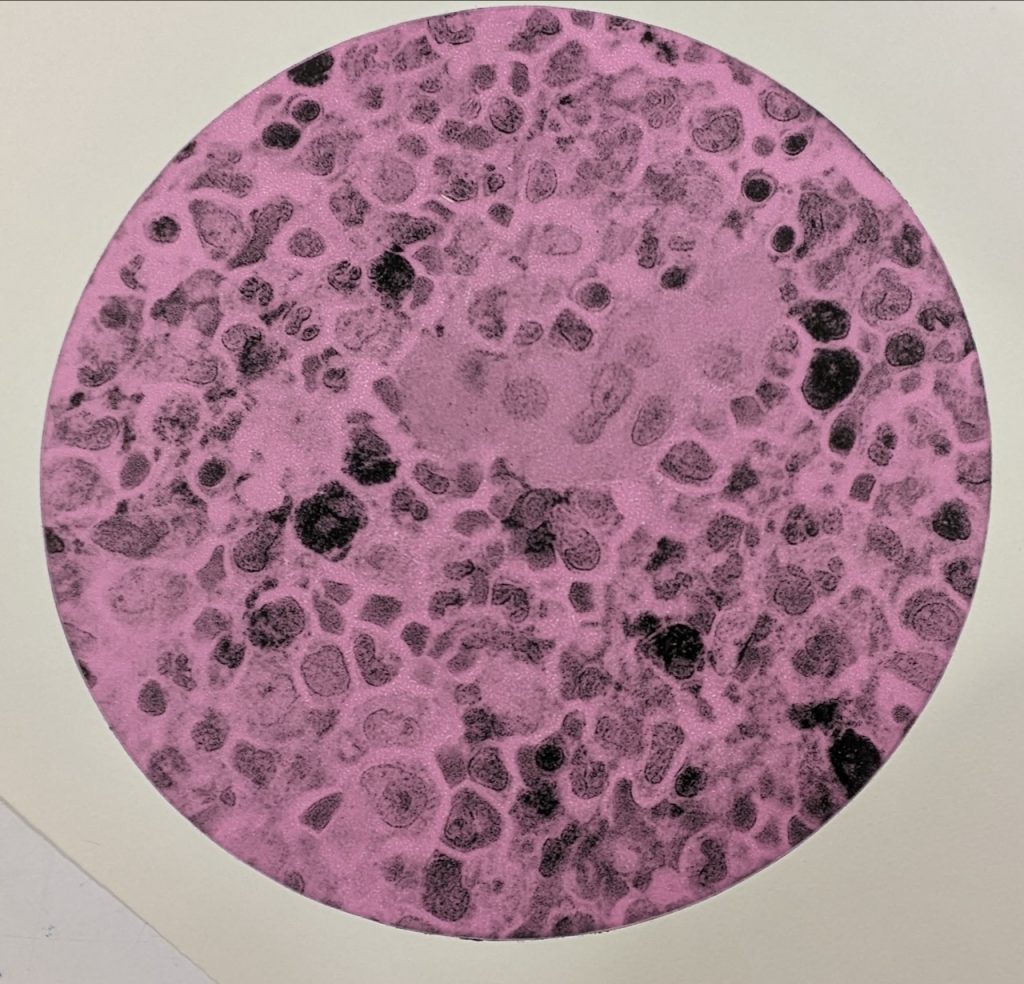
The proof is very even and on review the ink is active! Watching immediately after the print has gone through the press the pink ink is repelled where the water is held in the paper and not holding any black ink. This creates an even more appropriate effect for the subject matter of cell structures.
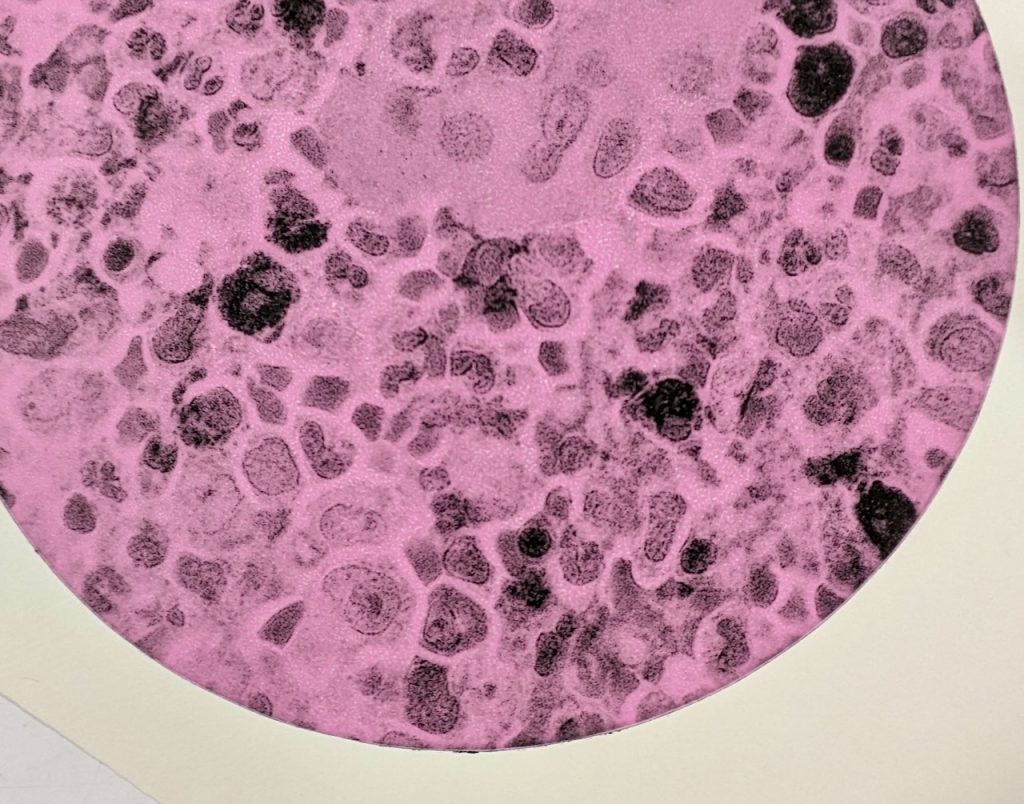
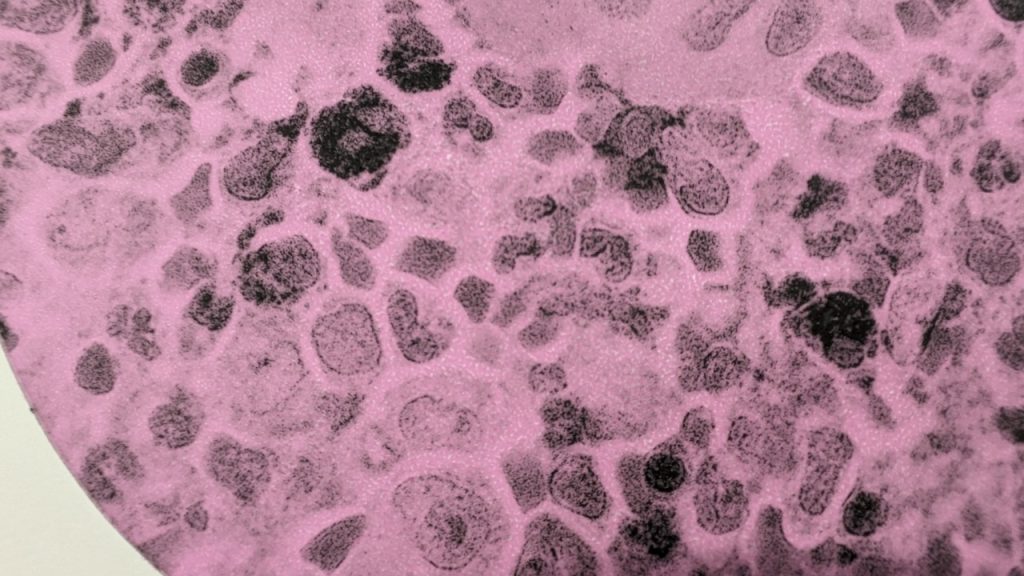
pink viscosity ink close up
Justin has another idea! A further proof is made without rolling the plate, placing face down on the re-rolled ink on glass. Justin pressed it down with his hands. This may deliver an overall or sporadic inking.
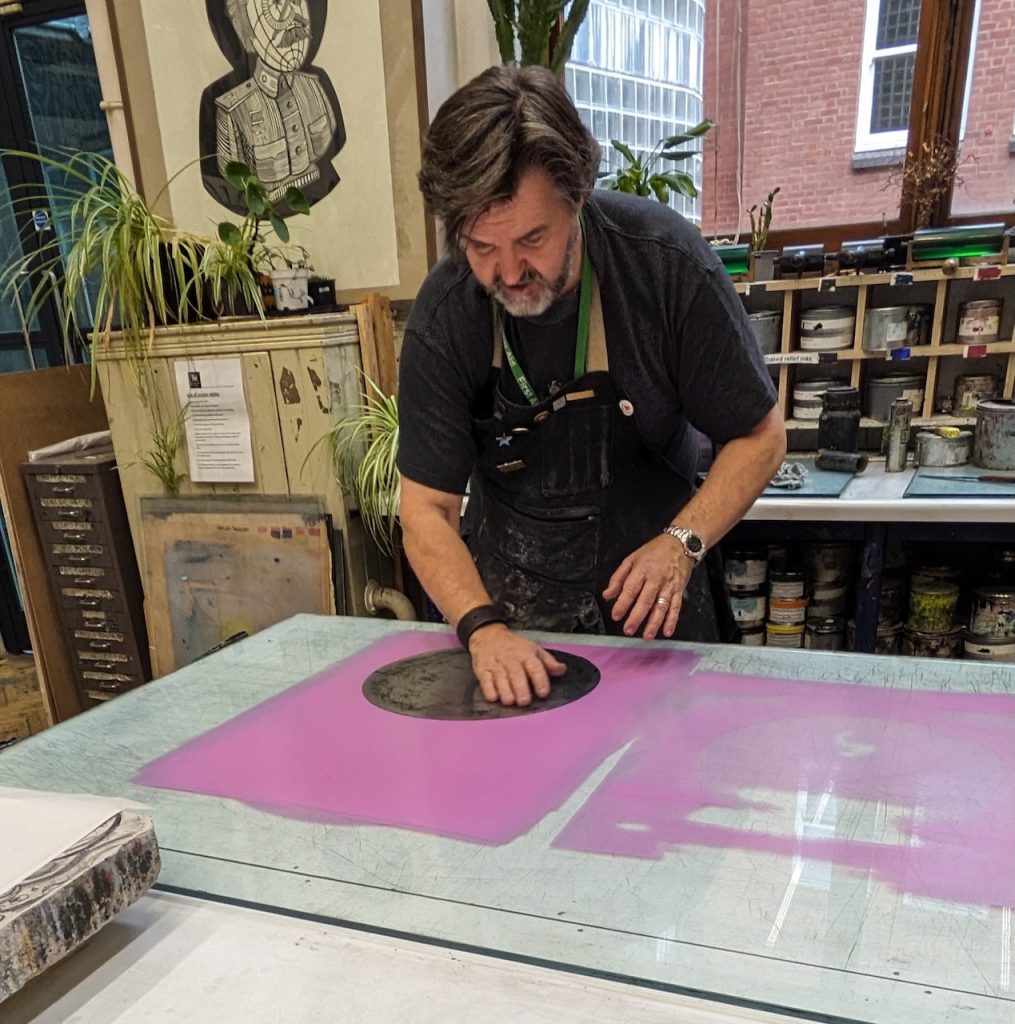
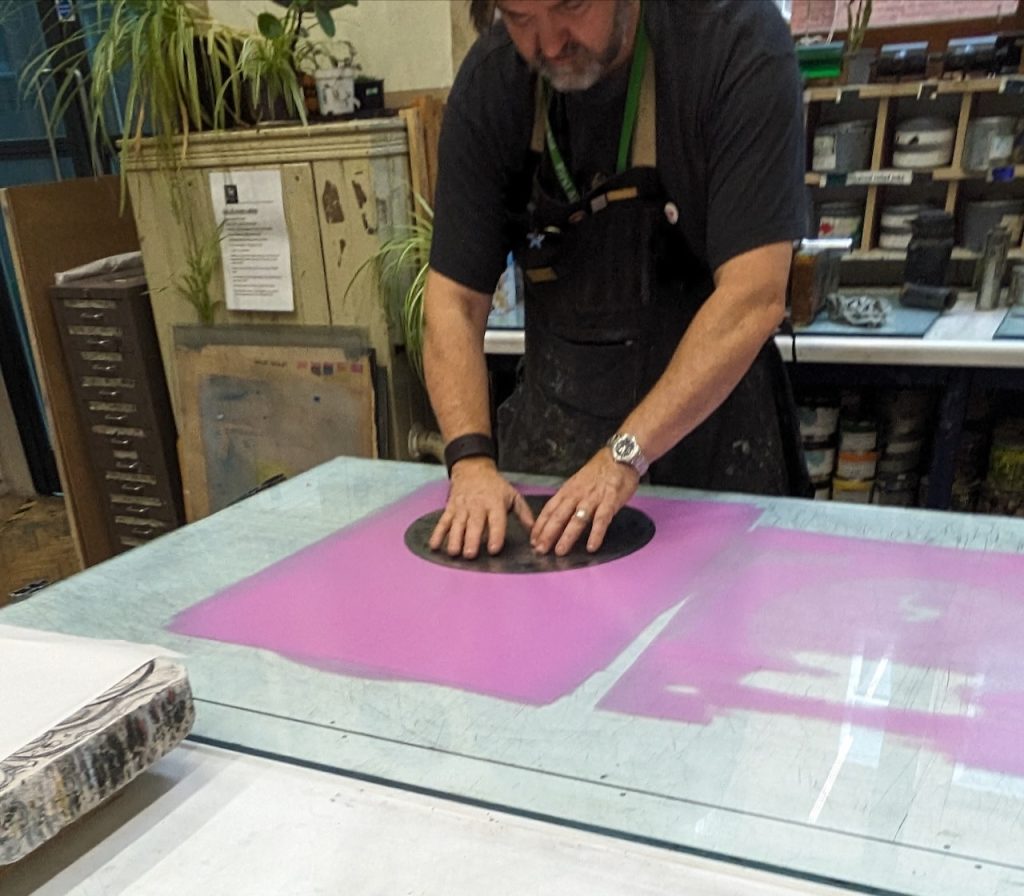
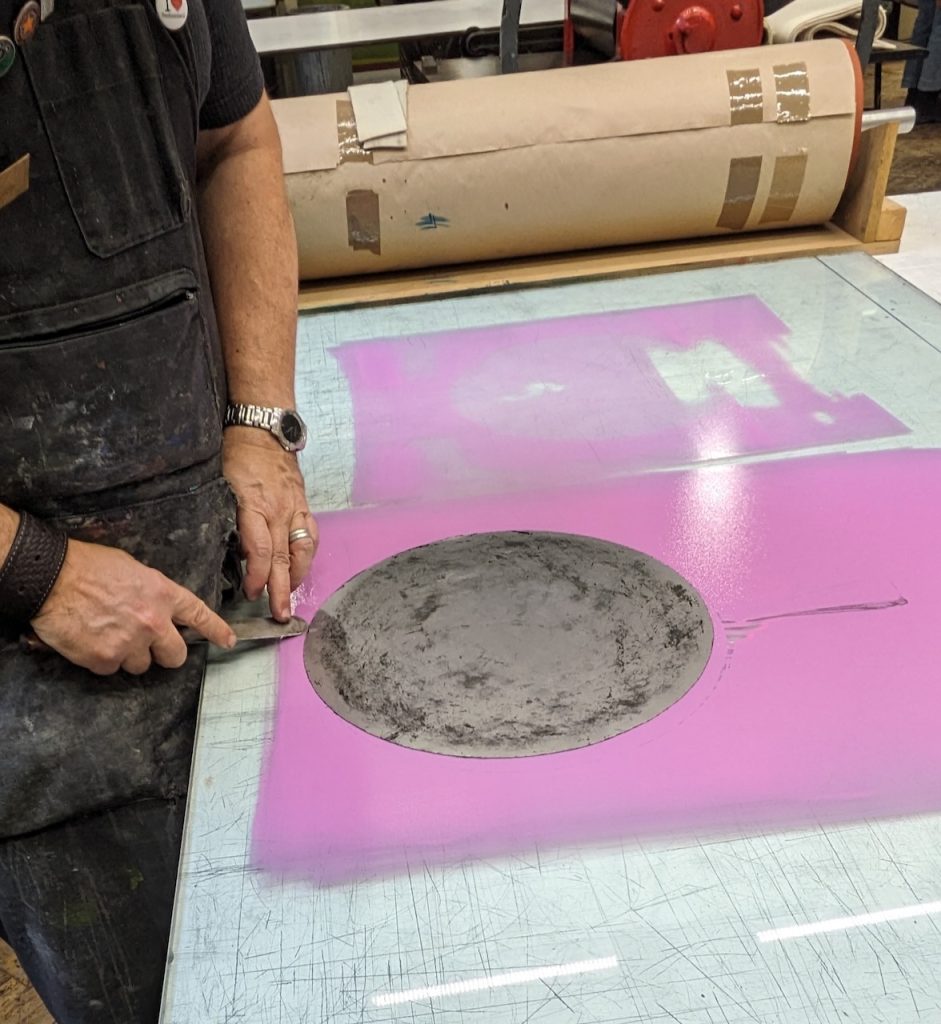
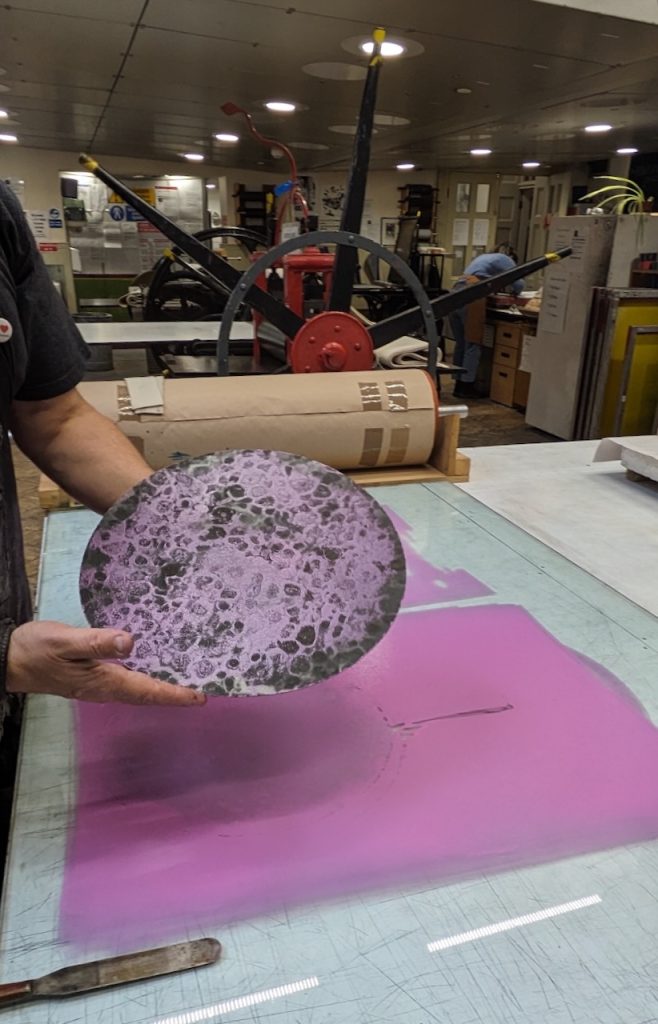
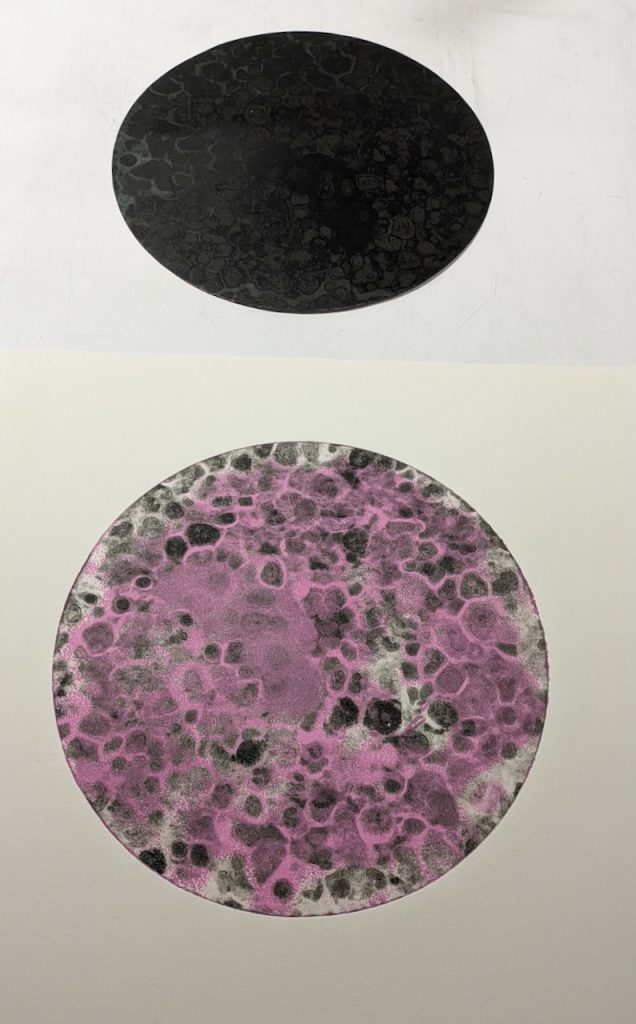
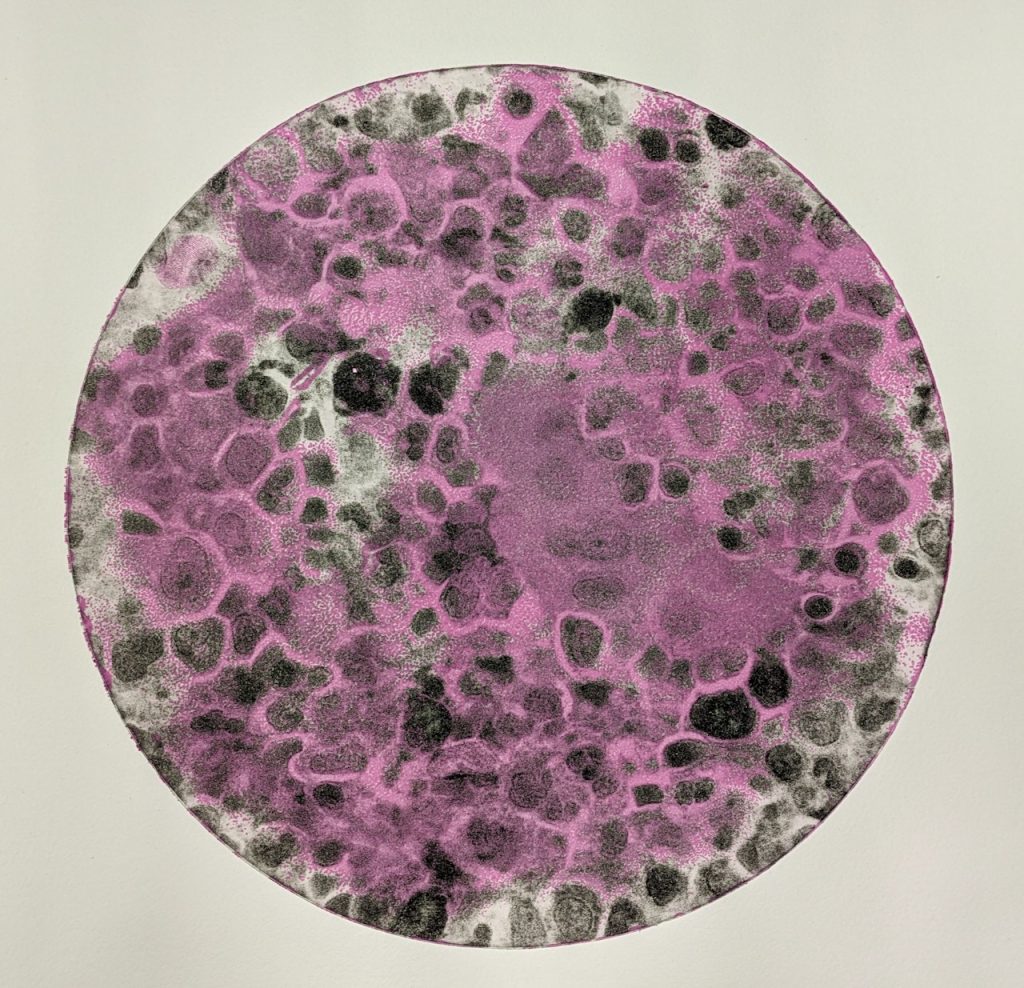
The hand pressed proof was very successful in that it did not present uniform pink coverage and encourages a more liquid unpredictability. The same effect of the white paper appearing after going through the press occurred. This was enhanced by the various dot effects achieved through the uneven pressure on the plate and subsequently the pink ink.
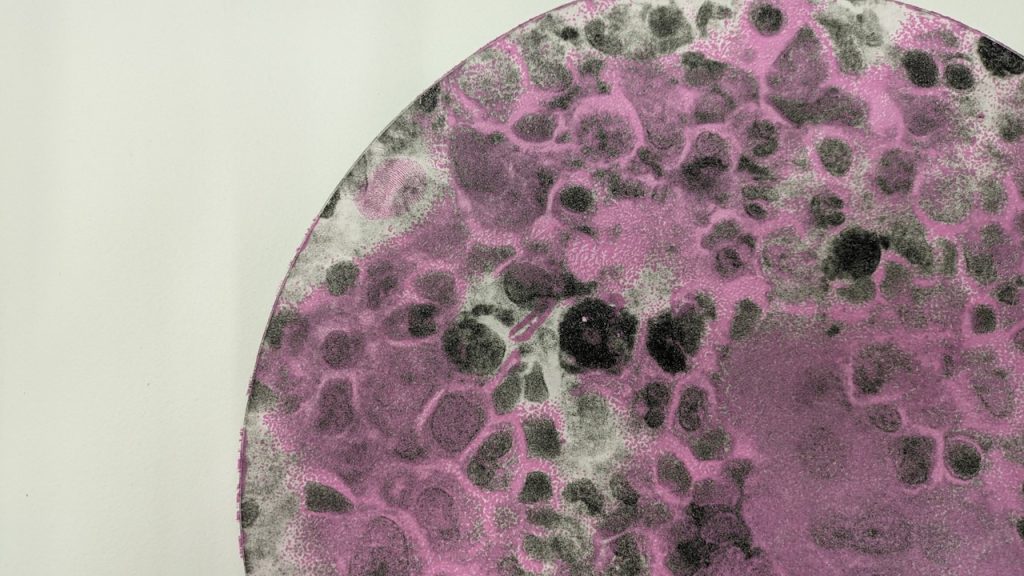
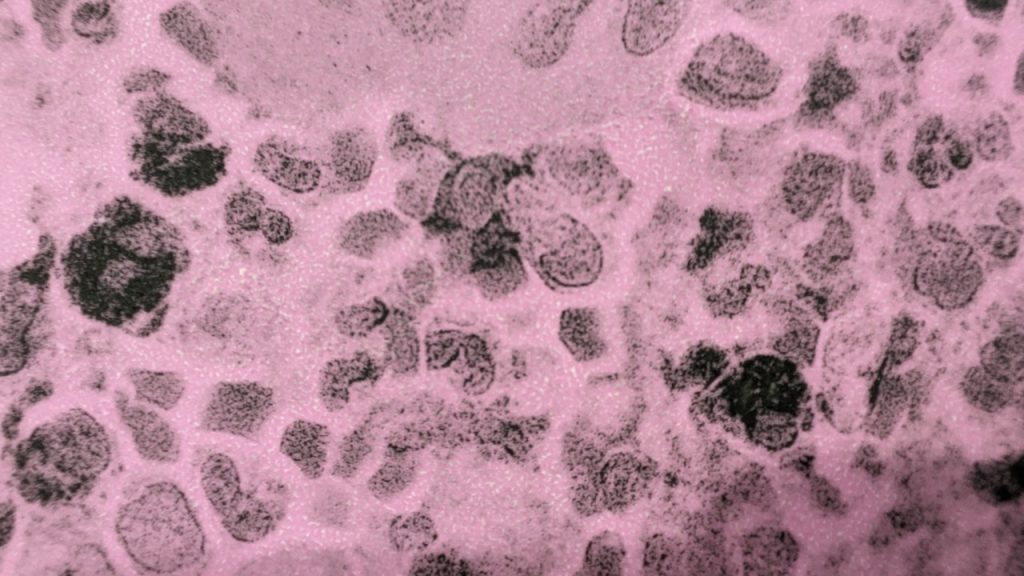
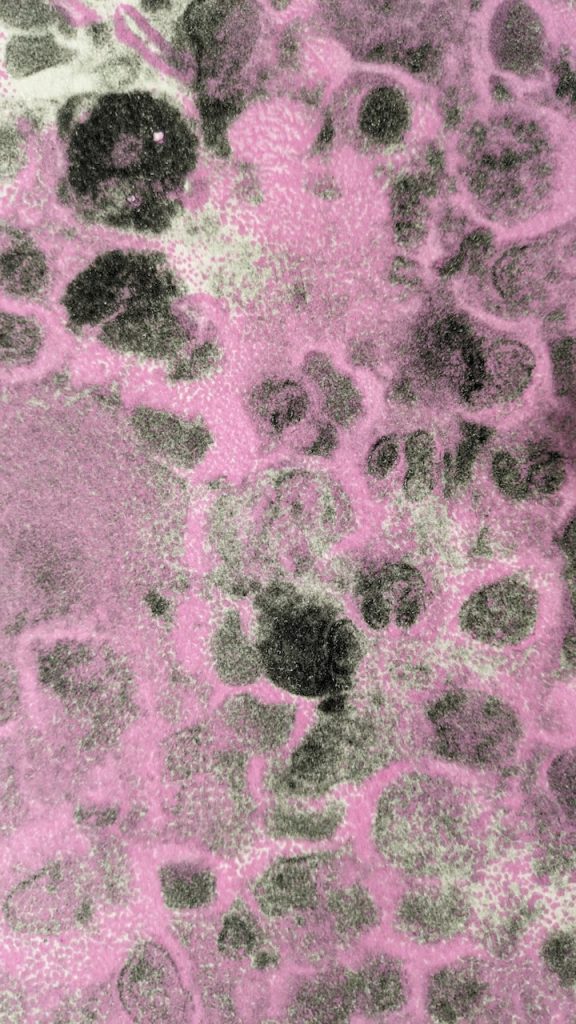
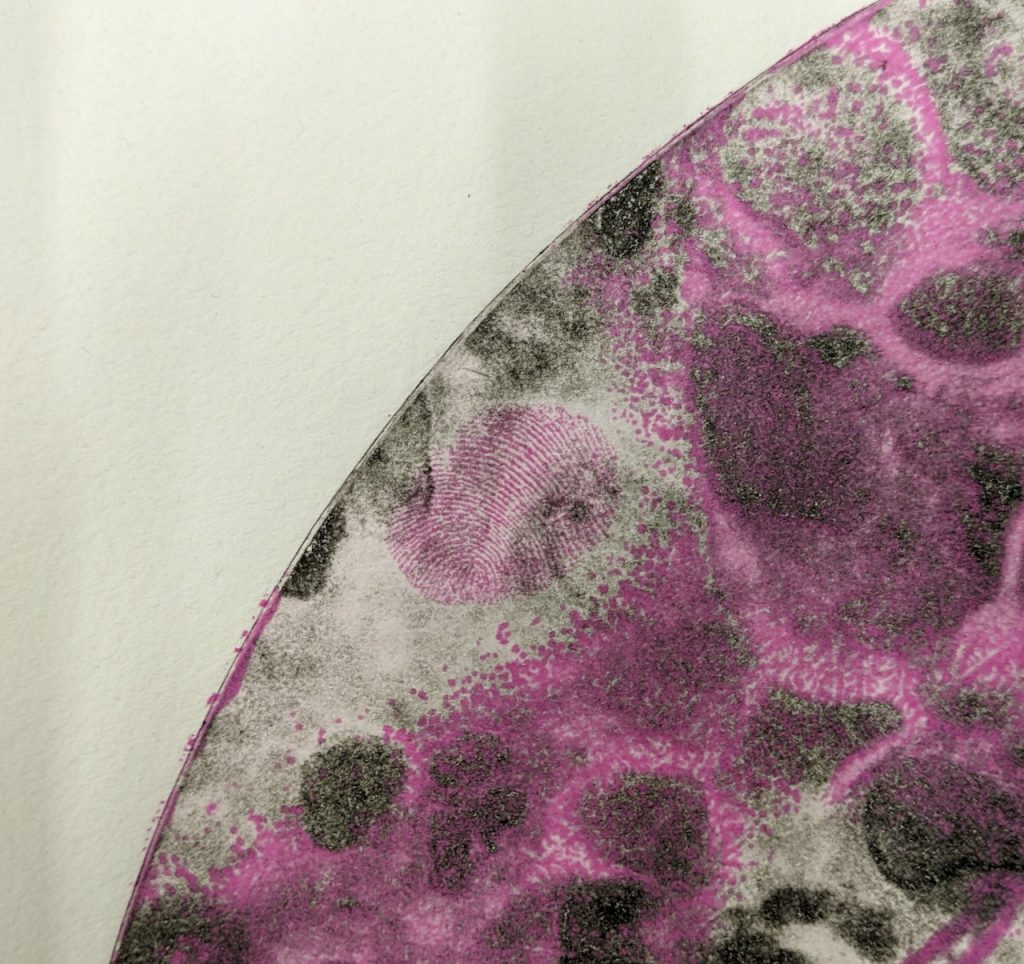
Later Justin offered me his copy of Stanley Hayter’s ‘New Ways of Gravure’ to understand more of the vast subtleties of the techniques. Hayter usefully goes into great detail on the rigorous control of the inks, roller, water and paper to achieve successful viscosity colour prints. He also describes how, by using hard and soft rollers three colour prints can be achieved. p142.

